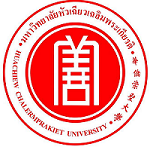Please use this identifier to cite or link to this item:
https://has.hcu.ac.th/jspui/handle/123456789/2814Full metadata record
| DC Field | Value | Language |
|---|---|---|
| dc.contributor.author | Peter Snashall | - |
| dc.contributor.other | Huachiew Chalermprakiet University. Faculty of Liberal Arts | en |
| dc.date.accessioned | 2024-09-15T11:55:20Z | - |
| dc.date.available | 2024-09-15T11:55:20Z | - |
| dc.date.issued | 2023 | - |
| dc.identifier.uri | https://has.hcu.ac.th/jspui/handle/123456789/2814 | - |
| dc.description | Proceedings of the 10th National and International Conference on "Research to Serve Society", 29 June 2023 at Huachiew Chalermprakiet University, Bangphli District, Samutprakarn, Thailand. (e-Conference on Zoom) p. 243-252. | en |
| dc.description.abstract | This research paper investigates the potential of generative AI technology, specifically large language models (LLMs), in enhancing English as a Second Language (ESL) instruction by offering teachers an innovative tool to create engaging and dynamic classroom activities. In addition to emphasizing the rapid development of LLMs and machine learning in language education, the study also underscores the necessity for teachers to acquire the skill of prompt engineering to harness the full benefits of AI. The methodology combines qualitative and quantitative survey data collected from ESL teachers who evaluated the usefulness and relevance of AI-generated prompts created by advanced LLMs for various ESL exercises, such as roleplays, vocabulary quizzes, and listening tasks. The research also examines the potential benefits and challenges associated with integrating generative AI, including LLMs and machine learning, into language teaching. The survey results reveal a positive response from teachers, indicating that generative AI and LLMs can enhance the quality and variety of ESL activities and save teachers valuable preparation time. By using AI to creatively generate exercises and mastering prompt engineering (writing instructions for AI), teachers can increase student engagement, promote language acquisition, and accommodate diverse topics, learning styles, and proficiency levels. However, concerns regarding the accuracy of AI-generated content are also highlighted, emphasizing the importance of proofreading, critical evaluation and customization of AI generated materials by teachers. The paper concludes by discussing the implications of these findings for ESL instruction and future research in the field of language education, LLMs, and AI technology. Recommendations are provided for best practices in leveraging generative AI tools, including LLMs, and developing prompt engineering skills to maximize their potential in ESL teaching while mitigating potential risks and challenges. This research contributes to the growing body of literature on the intersection of AI, LLMs, and language education, and its findings hold promise for enhancing the teaching and learning experience in ESL classrooms. | en |
| dc.language.iso | en_US | en |
| dc.rights | มหาวิทยาลัยหัวเฉียวเฉลิมพระเกียรติ | en |
| dc.subject | Artificial intelligence -- Educational applications | en |
| dc.subject | ปัญญาประดิษฐ์ -- การใช้ในการศึกษา | en |
| dc.subject | English teachers | en |
| dc.subject | ครูภาษาอังกฤษ | en |
| dc.subject | English language -- Study and teaching -- Foreign speakers | en |
| dc.subject | ภาษาอังกฤษ -- การศึกษาและการสอน -- ผู้พูดภาษาต่างประเทศ | en |
| dc.subject | Natural language processing (Computer science) | en |
| dc.subject | การประมวลผลภาษาธรรมชาติ (วิทยาการคอมพิวเตอร์) | en |
| dc.title | Empowering ESL Teachers with Generative AI | en |
| dc.type | Proceeding Document | en |
| Appears in Collections: | Liberal Arts - Proceeding Document | |
Files in This Item:
| File | Description | Size | Format | |
|---|---|---|---|---|
| Empowering-ESL-Teachers-with-Generative-AI.pdf | 494.65 kB | Adobe PDF | View/Open |
Items in DSpace are protected by copyright, with all rights reserved, unless otherwise indicated.
